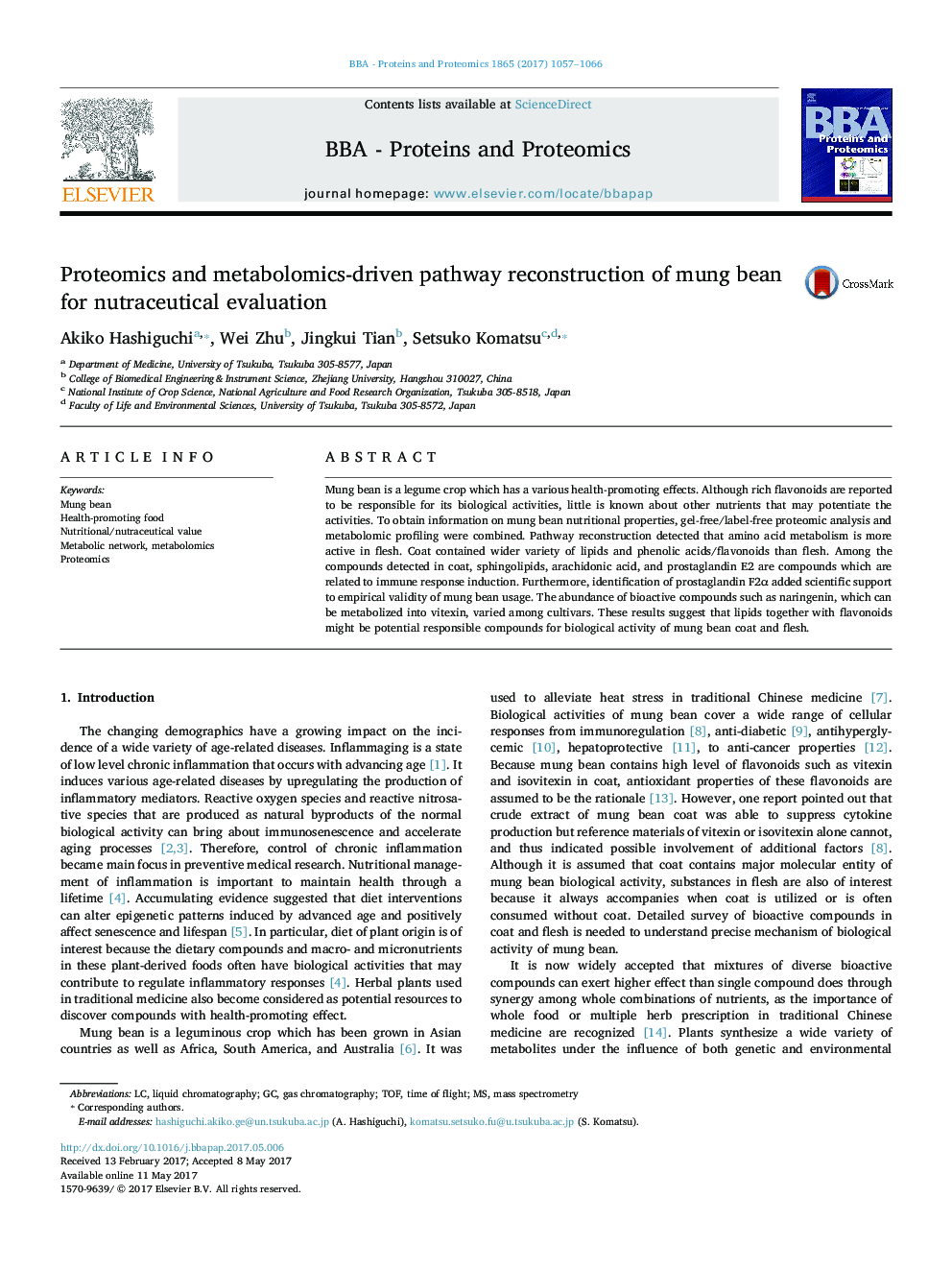| Article ID | Journal | Published Year | Pages | File Type |
|---|---|---|---|---|
| 5131999 | Biochimica et Biophysica Acta (BBA) - Proteins and Proteomics | 2017 | 10 Pages |
â¢Omics approach revealed metabolic differences between mung bean coat and flesh.â¢Wider variety of proteases were detected in coat.â¢Lipids/flavonoids with immunomodulatory activity were detected in coat.â¢Synthetic pathways of lipid and terpenoids were visualized to be active in coat.â¢Existence of PGF2α supported the usage of mung bean as a postpartum food.
Mung bean is a legume crop which has a various health-promoting effects. Although rich flavonoids are reported to be responsible for its biological activities, little is known about other nutrients that may potentiate the activities. To obtain information on mung bean nutritional properties, gel-free/label-free proteomic analysis and metabolomic profiling were combined. Pathway reconstruction detected that amino acid metabolism is more active in flesh. Coat contained wider variety of lipids and phenolic acids/flavonoids than flesh. Among the compounds detected in coat, sphingolipids, arachidonic acid, and prostaglandin E2 are compounds which are related to immune response induction. Furthermore, identification of prostaglandin F2α added scientific support to empirical validity of mung bean usage. The abundance of bioactive compounds such as naringenin, which can be metabolized into vitexin, varied among cultivars. These results suggest that lipids together with flavonoids might be potential responsible compounds for biological activity of mung bean coat and flesh.
Graphical abstractDownload high-res image (169KB)Download full-size image
